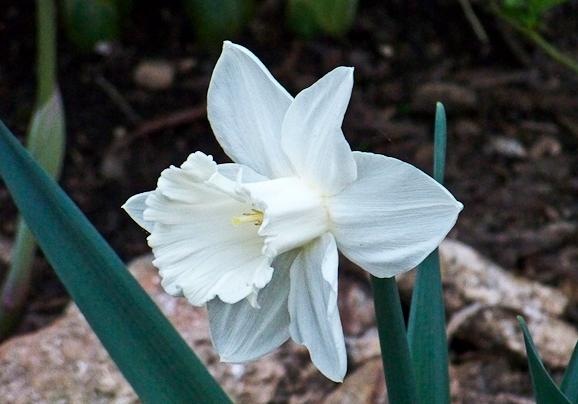Daffodils are native to Europe, North Africa, Western Asia, and the Mediterranean region. Narcissi (daffodils) are one of the oldest cultivated bulbous ornamental plants. They are members of the “Amaryllis” plant family. Today, there are sixty known species and many horticultural varieties.
There are twelve ‘Divisions’ of Narcissus, each with different blossom characteristics based on the size and shape of the trumpet. They come in various shapes, sizes, and colors ─ yellow, white, and even bi-colored with orange or pink.
All types of Narcissi are very long-lived in the landscape; they grow well in our region and will multiply over time forming a large mass of beautiful color. They need good drainage and grow best in full sun locations. As with all types of bulbs, gardeners should leave the foliage intact after blooming. Don’t remove the old foliage until it has yellowed. The foliage produces food for the bulbs to bloom in the next season.
If blossoming is declining in your garden, it’s likely that the plants are too shaded or are overcrowded. After the foliage has turned yellow, lift the bulbs, separate, and replant them. There is no advantage to storing these bulbs until the fall.
Another big plus for Narcissus is that they are toxic; therefore deer, rabbits, and squirrels will not eat them. This cannot be said about tulips and many other bulbs.

Does early emergence harm them?
Fortunately, Narcissus and most other spring bulbs are remarkably cold tolerant. Even when the foliage is exposed to cold weather the damage is limited to some yellowing or browning of the foliage. Flower buds are generally well protected below the soil. Plants with a 2-3 inch layer of mulch are even less likely to be damaged by the cold. The first bulbs to bloom are always in warm ‘micro climate’ locations that receive a lot of sunlight.
Additional resource
This article originally appeared in the Spring 2012 edition of Home and Garden News.
